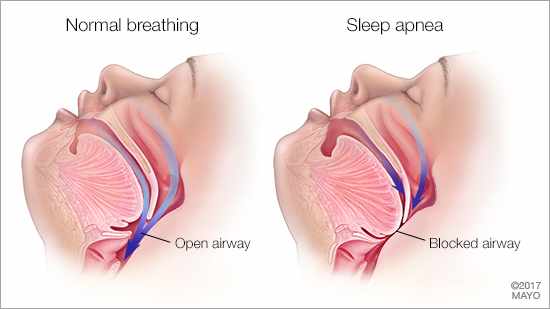How Orthodontics Realigns the Face and Teeth
Stephen Deal • Dec 12, 2018

Foreword: The idea is for this to be the first in a series of blogs by Dr. Deal to educate followers or anyone who will listen on topics in Oral Medicine. Some blogs may be continuations of previous ones, or some may be just stand alone one-piece topics, either way the goal is to get people to start thinking about dentistry as more than just teeth and start realizing that the head and neck is a crucial part to our overall health.
A good place to start for this blog is a hot topic on everyone’s brains these days, crooked or malpositioned teeth. Seems like everyone in the world is interested in orthodontics and straightening their teeth in the quickest way possible. Since it is such an important and relatable topic this post will have several follow up and continuation blogs, but for this one in particular we will focus on how and why teeth get crooked or unpleasant looking to begin with.
With the exclusion of a few fore fathers of growth guidance, the orthodontics industry has been one in which the only goal throughout treatment is to end up with straight teeth. Typically, there is little regard for how the teeth got in the crooked positions they are in. The only barometer for success is if the teeth are aligned and straight in the end. This style of treatment would be analogous to finding a leak in your ceiling and replacing the sheetrock of the ceiling only without considering the source of the leak in the roof. In other words, the problem looks to be fixed and everything is pretty again, but the next time it rains, here comes the leak. In traditional orthodontics, the teeth appear beautiful and straight when treatment is done, but down the road, when the original undiagnosed problems are not fully addressed, the teeth tend to devolve back to their original positions, albeit not as crooked as they were before but not as beautiful as they should be. Why is this?
Well I’m here to tell you that they don’t just randomly come into these crooked positions, instead it is a combination of evolution and epigenetics (environmental influence) that causes these malocclusions or crooked teeth. The crooked and malpositioned teeth we see today have NOT been a problem since the beginning of time. When we go back and study the jaws and teeth of people in prehistoric eras, it becomes obvious the differences between theirs and modern day humans’. To name just a few key differences, their jaws were more robust and developed in a more forward (Anterior) manner, meaning there was more room for all the teeth to fit in the arches (even wisdom teeth!!!), and their teeth were worn down and flatter than modern man. These changes and many others can all be attributed to changes in lifestyles from their societies to ours. Modern humans have a much softer and more sugar-filled diet than our ancestors, which not only gives us cavities (a “relatively” new problem) but also lead to us having smaller, more underdeveloped jaws due to less muscle pull on the bones you get from chewing harder foods. Another difference is the changes in our nursing of newborns.
In ancient eras they breast fed their children for much longer than we do today in modern society. We are the only mammals in the animal kingdom that wean our offspring before the first baby molar erupts into the mouth. Breast feeding (stay tuned for more info in later posts) plays a crucial role in developing the infants upper and lower jaw and preparing the child for proper nasal breathing and swallowing. Now you may be asking “why do I care about boring prehistoric skulls?” or “how does modern man’s small jaws relate to my crooked teeth?”. Well I mentioned these changes in skull and jaw structure because it answers the “how” part of the question from the beginning. Nothing much has changed regarding the size of our teeth over the centuries. They are just prone to coming in crooked due to these evolutions in skull structure. That doesn’t mean that everyone’s teeth will be crooked, but the physically smaller jaw size does explain how so many people have developed crooked teeth
Now to answer the “why” part of the question. It may seem obvious that smaller jaws leads to less room for our teeth to fit in (thus we see crowding, bad bites, etc), but that is probably the least worrisome of the consequences of underdeveloped jaws. The most important consequence and the biggest reason that teeth can become malpositioned has to do with the effects on the airway (pharynx, larynx, and trachea in medical terms). Before I walk you through the cascade of events to show how a smaller airway leads to crooked teeth, it should be noted that the human body’s number one priority, at all times, is to take in oxygen . The body will go through significant lengths and sacrifice everything else in order to keep breathing. Now going back to how our jaws have evolved into smaller and more posteriorly positioned jaws over the past 2000 years, we can now understand that if our jaws are not developing forward like they should, and are “jammed back in our throats” so to speak, the room for air to pass through that space is more limited (not to mention the room for the tongue is decreased as well, more later on this). The jaw of most importance is the top jaw or the maxilla. It can be argued that its position is the most important because attached to this jaw is the nasal complex. Human beings are “obligate nasal breathers” to quote world renowned paleontologist, Dr. Tim Bromage, meaning that we are supposed to be breathing through our noses. This is not just because people look funny with their mouths open all the time, but because the nasal passage is important for purifying and preparing the air we breathe for our lungs in a way that the mouth cannot. If the top jaw is not developed forward like it should be, that means the nasal complex is not as developed as it should be either. This leads to less room for air to pass through our nose and into the back of our throats on down to our lungs, which means we cant breathe through our noses properly. Since the body won’t stand for not breathing, other methods to breathe develop, and that’s where we get to the famously negative term “mouth breathers” . If the nasal passage is decreased in volume by the underdeveloped top jaw, the body starts to adapt to allow the person to breathe through the only other option available, the mouth. This adaptation manifests as changes in tongue position, lower jaw shape and size, lip posture, and as a result of all of these…. crooked teeth .
In upcoming blogs, we will discuss what specific type of dental and facial changes we see from the switch from nasal to mouth breathing, but for this intro blog its important just to realize that the airway and mode of breathing dictates so much in terms of our facial form and teeth position. Without properly diagnosing a limited airway and ALL of the patients’ issues in the beginning of orthodontic treatment, a lot of these problems go untreated and disrupt the positions of the teeth even after they have been straightened and aligned.
For years, it has just been enough to straighten the teeth without making any substantial changes to the jaws or paying attention to the patients breathing patterns. However, as time passes and we learn more it is becoming more and more obvious that to have a truly “successful” outcome it all starts with the proper diagnosis and identification of these often-overlooked problems. Several dental and orthodontic researchers have estimated that 80-85% of the population has a small upper jaw. With a problem as prevalent as this, it is time to start paying attention to it.
Finally, it is worth pointing out that the crooked teeth and jaw issues are not even close to the only effects seen from the diminished airway. Problems like sleep apnea, TMJ pain, popping and clicking jaw joints, chronic migraines, and others result from airway compromises, further proving the importance of recognizing and treating the problem.
In upcoming posts, we will discuss what types of treatments can be done to help stimulate proper growth and remodeling of the jaw bones to get them into a more favorable position and maximize the airway. As stated earlier, this blog is not intended to debunk any of the amazing work that has been done in orthodontics over the past 50 years, after all it is only through these past accomplishments that we can further our understanding of all things in the head and neck. However, its goal is to educate anyone who will listen on the benefits that can come from a more comprehensive treatment than just straightening teeth.







